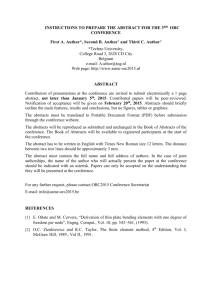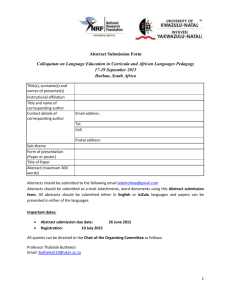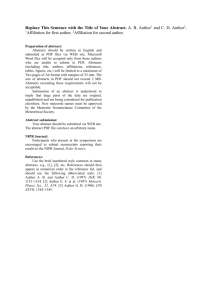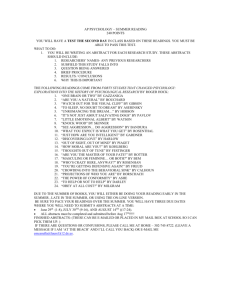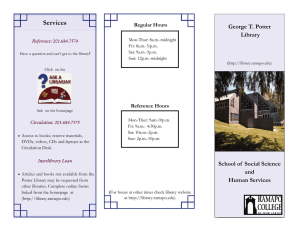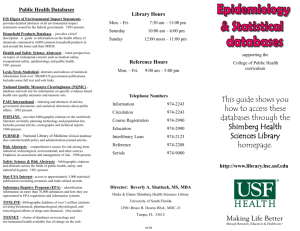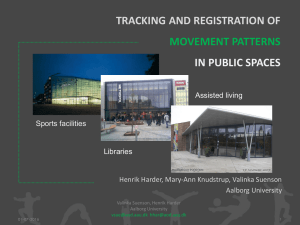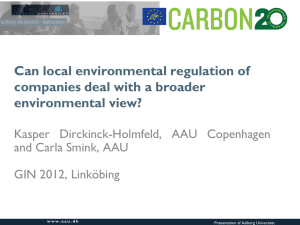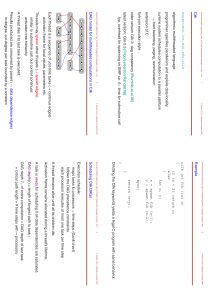Abstract ENG - Aalborg Universitet
advertisement
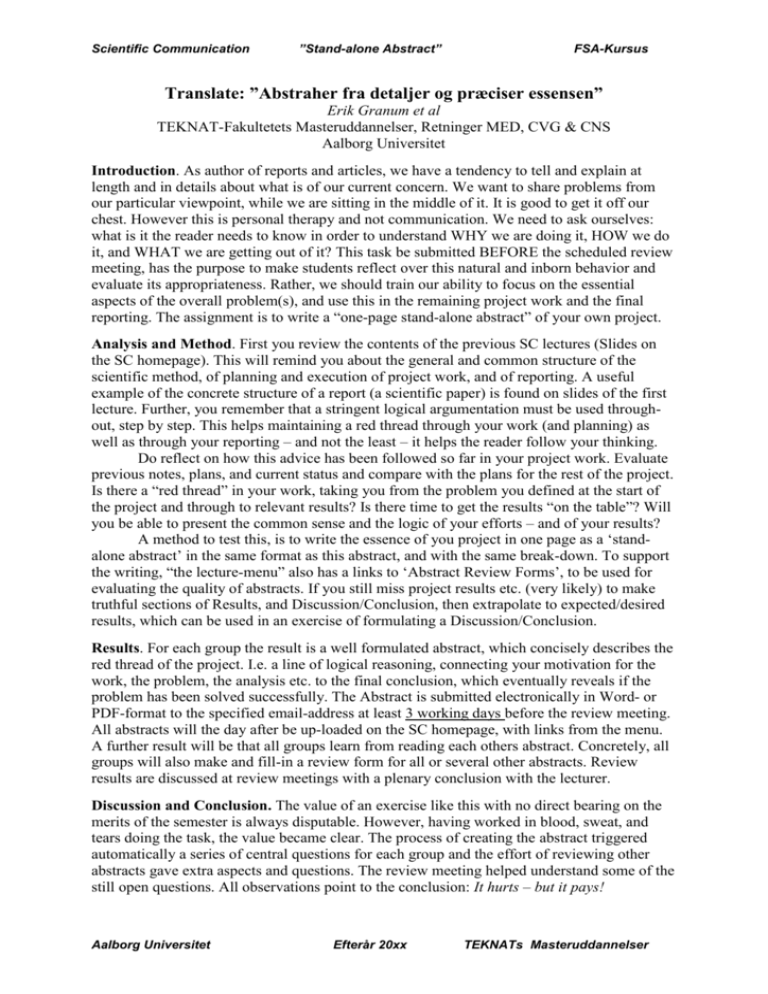
Scientific Communication ”Stand-alone Abstract” FSA-Kursus Translate: ”Abstraher fra detaljer og præciser essensen” Erik Granum et al TEKNAT-Fakultetets Masteruddannelser, Retninger MED, CVG & CNS Aalborg Universitet Introduction. As author of reports and articles, we have a tendency to tell and explain at length and in details about what is of our current concern. We want to share problems from our particular viewpoint, while we are sitting in the middle of it. It is good to get it off our chest. However this is personal therapy and not communication. We need to ask ourselves: what is it the reader needs to know in order to understand WHY we are doing it, HOW we do it, and WHAT we are getting out of it? This task be submitted BEFORE the scheduled review meeting, has the purpose to make students reflect over this natural and inborn behavior and evaluate its appropriateness. Rather, we should train our ability to focus on the essential aspects of the overall problem(s), and use this in the remaining project work and the final reporting. The assignment is to write a “one-page stand-alone abstract” of your own project. Analysis and Method. First you review the contents of the previous SC lectures (Slides on the SC homepage). This will remind you about the general and common structure of the scientific method, of planning and execution of project work, and of reporting. A useful example of the concrete structure of a report (a scientific paper) is found on slides of the first lecture. Further, you remember that a stringent logical argumentation must be used throughout, step by step. This helps maintaining a red thread through your work (and planning) as well as through your reporting – and not the least – it helps the reader follow your thinking. Do reflect on how this advice has been followed so far in your project work. Evaluate previous notes, plans, and current status and compare with the plans for the rest of the project. Is there a “red thread” in your work, taking you from the problem you defined at the start of the project and through to relevant results? Is there time to get the results “on the table”? Will you be able to present the common sense and the logic of your efforts – and of your results? A method to test this, is to write the essence of you project in one page as a ‘standalone abstract’ in the same format as this abstract, and with the same break-down. To support the writing, “the lecture-menu” also has a links to ‘Abstract Review Forms’, to be used for evaluating the quality of abstracts. If you still miss project results etc. (very likely) to make truthful sections of Results, and Discussion/Conclusion, then extrapolate to expected/desired results, which can be used in an exercise of formulating a Discussion/Conclusion. Results. For each group the result is a well formulated abstract, which concisely describes the red thread of the project. I.e. a line of logical reasoning, connecting your motivation for the work, the problem, the analysis etc. to the final conclusion, which eventually reveals if the problem has been solved successfully. The Abstract is submitted electronically in Word- or PDF-format to the specified email-address at least 3 working days before the review meeting. All abstracts will the day after be up-loaded on the SC homepage, with links from the menu. A further result will be that all groups learn from reading each others abstract. Concretely, all groups will also make and fill-in a review form for all or several other abstracts. Review results are discussed at review meetings with a plenary conclusion with the lecturer. Discussion and Conclusion. The value of an exercise like this with no direct bearing on the merits of the semester is always disputable. However, having worked in blood, sweat, and tears doing the task, the value became clear. The process of creating the abstract triggered automatically a series of central questions for each group and the effort of reviewing other abstracts gave extra aspects and questions. The review meeting helped understand some of the still open questions. All observations point to the conclusion: It hurts – but it pays! Aalborg Universitet Efterår 20xx TEKNATs Masteruddannelser


